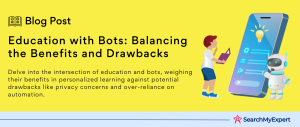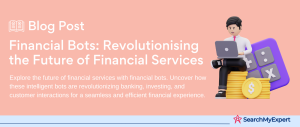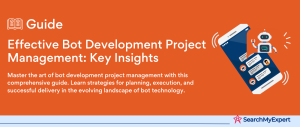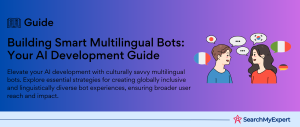Understanding the Rise of Bots in the Digital Age
In today’s digital era, the term “bot” has become increasingly common, often interwoven with discussions about technological advancements and digital strategies. Bots, short for robots, are essentially software applications programmed to perform specific tasks automatically. These tasks range from simple automated responses in a chat to complex functions like data analysis, online transaction processing, and interactive digital assistants.
Why Bots Have Gained Popularity
Bots have gained substantial traction due to their efficiency and ability to automate repetitive tasks. They serve various purposes, from customer service automation in chatbots to data collection and analysis. Their ability to handle tasks without human intervention makes them invaluable in scaling operations, reducing human error, and enhancing customer engagement. With advancements in AI and machine learning, bots are becoming more intelligent, offering personalized interactions and insights, which further fuels their adoption across different sectors.
Choosing the Right Platform for Bot Development
The success of bot deployment heavily relies on choosing an appropriate platform for development. A bot platform is a tool or service that helps in building and deploying bots. These platforms offer various features, such as natural language processing, integration capabilities, and analytical tools, that are crucial for creating effective bots. Selecting the right platform is pivotal as it affects the bot’s functionality, scalability, user experience, and maintenance.
Key Considerations in Platform Selection
When selecting a platform for bot development, several factors come into play:
- Integration Capabilities:
The platform should seamlessly integrate with existing systems and third-party services. - Customization and Scalability: It should offer customization options to tailor the bot according to specific needs and be scalable to handle increasing loads.
- User Experience:
The platform must support a user-friendly interface for both developers and end-users. - Support and Community:
Adequate support and an active developer community can be immensely helpful for troubleshooting and improvements.
Identifying the Specific Function and Goals of Your Bot
When venturing into the realm of bot development, the first crucial step is defining the purpose and goals of your bot. Understanding what you want your bot to achieve is key to its success. Bots can serve various functions, each tailored to meet different objectives:
- Customer Service Bots:
Designed to handle customer inquiries, provide support, and resolve issues efficiently. They can automate responses to common questions, guide users through troubleshooting steps, or escalate complex issues to human agents. - Lead Generation Bots: These bots engage with potential customers, gather information, and qualify leads for sales teams. They can initiate conversations, ask qualifying questions, and even schedule appointments or calls.
- Educational Bots:
Used in e-learning platforms, these bots offer personalized learning experiences. They can provide learning materials, conduct quizzes, and offer feedback to learners.
Understanding Your Target Audience and Preferred Communication Channels
The effectiveness of a bot also hinges on a deep understanding of its target audience. Identifying who will interact with your bot helps tailor its design, functionality, and communication style to meet their needs and preferences.
- Demographics and Psychographics:
Understanding the age, gender, location, interests, and behaviors of your target audience allows you to design a bot that resonates with them. - Preferred Communication Channels:
Different audiences may prefer different communication channels. For instance, younger audiences might be more engaged on social media platforms, while a professional audience might prefer email or LinkedIn.
Integrating your bot into channels frequented by your target audience ensures higher engagement and effectiveness. For example, a customer service bot for a tech-savvy audience might be best deployed on a website or a mobile app, whereas a bot targeting retirees might be more successful over email or a messaging service like WhatsApp.
Researching Popular Bot Development Platforms
The landscape of bot development is rich with a variety of platforms, each offering unique features and capabilities. To create an effective bot, it’s essential to explore and compare these platforms. Some of the most popular ones include Dialogflow, Microsoft Bot Framework, and Rasa. Each platform caters to different needs and offers various functionalities, making the choice dependent on your specific requirements.
- Dialogflow (by Google):
Known for its robust natural language understanding (NLU) capabilities, Dialogflow allows developers to create conversational interfaces for websites, mobile applications, and popular messaging platforms. - Microsoft Bot Framework: Part of the Azure ecosystem, this framework offers comprehensive tools for building bots. It integrates seamlessly with Microsoft’s suite of tools and services, making it ideal for businesses embedded in the Microsoft environment.
- Rasa:
An open-source platform favored for its flexibility and control. Rasa is particularly suited for developers looking to build highly customized bots without relying on third-party services.
Evaluating Features of Bot Development Platforms
When choosing a bot development platform, several key features should be evaluated to ensure that the platform aligns with your bot’s objectives:
- Ease of Use: The platform should have an intuitive interface, making it accessible for developers with varying skill levels. This includes user-friendly design tools, clear documentation, and supportive communities.
- Natural Language Processing (NLP) Capabilities:
Essential for understanding and processing human language. Platforms with advanced NLP can interpret user intent more accurately, leading to more effective interactions. - Integration Options:
The ability to integrate with existing systems (like CRM software, databases, or analytics tools) and third-party services is crucial for a seamless operation. - Analytics Tools:
Analytics are key to understanding user interactions and improving bot performance. Platforms that offer detailed analytics enable developers to track metrics like user engagement, satisfaction, and conversation outcomes.
Considering Technical Expertise and Budget Constraints
When selecting a bot development platform, it’s crucial to assess your technical capabilities and financial resources. These factors significantly influence your choice, as they determine the complexity of the bot you can build and the extent of features you can afford.
- Technical Expertise:
Your level of technical skill will guide you in choosing a platform that matches your proficiency. If you have a strong background in programming and bot development, a platform like Rasa, which offers extensive customization, might be suitable. On the other hand, for those with limited coding experience, user-friendly platforms like Dialogflow or Microsoft Bot Framework provide more guided and templated approaches. - Budget Constraints:
Budget is another critical factor. Some platforms offer free tiers or open-source options (like Rasa), which are ideal for small businesses or individual developers. However, these might require more time and technical know-how. In contrast, premium platforms come with more built-in features and support, but at a higher cost.
Prioritizing Features and Functionalities for Your Bot
Identifying and prioritizing the features and functionalities that are essential for your bot’s purpose is vital for its success. Each bot’s requirements vary based on its intended use, target audience, and deployment channels.
- For Customer Service Bots:
Prioritize NLP capabilities for understanding user queries, integration with customer relationship management (CRM) systems, and the ability to hand over complex queries to human agents. - For Lead Generation Bots: Focus on features like data capture forms, integration with sales and marketing tools, and analytics to track engagement and conversion rates.
- For Educational Bots:
Emphasize content delivery mechanisms, interactive learning tools, and integration with educational resources and tracking systems.
Utilizing Free Trials or Demos to Experiment with Platform Features
Before fully committing to a bot development platform, it’s wise to take advantage of free trials or demo versions offered by these platforms. This step is crucial in ensuring that the platform aligns with your needs and expectations.
- Exploring Platform Capabilities:
Free trials allow you to explore the range of features available on the platform. This includes testing out their natural language processing abilities, integration options, and any unique functionalities that the platform may offer. - Hands-On Experience: By using the platform firsthand, you gain a better understanding of its user interface and overall usability. This experience can be invaluable in assessing whether the platform suits your technical skill level and development style.
Comparing User Experience and Potential Outcomes Across Platforms
Comparing different platforms side by side is an effective way to gauge which one would best suit your bot’s requirements. This comparison should focus on several key aspects:
- User Experience (UX):
Assess the intuitiveness of the platform’s design and navigation. A platform that’s easy to navigate and understand can significantly streamline the development process. - Bot Performance: Use the trial period to build a basic version of your bot and test how it performs in real-life scenarios. Pay attention to its conversational flow, response accuracy, and handling of unexpected queries.
- Outcome Alignment: Evaluate how well each platform’s features align with your bot’s intended outcomes. For instance, if your bot’s primary goal is to provide customer support, look for platforms that excel in handling complex queries and integrating with existing customer support tools.
Considering Platform Capabilities for Integration and Deployment
Once the development phase of your bot is complete, the next crucial step is deploying it on your chosen channels. The ease of integration and deployment varies across platforms, and choosing one that aligns with your deployment strategy is essential.
- Integration with Desired Channels: Whether you plan to deploy your bot on a website, social media platform, messaging app, or any other digital channel, the chosen platform should facilitate seamless integration. For instance, if your target audience primarily interacts on social media, ensure the platform supports integration with these networks.
- Deployment Ease: The platform should offer a straightforward deployment process. This might include features like one-click deployment, easy-to-follow instructions, or direct integration with your existing digital infrastructure.
Evaluating Tools and Support for Ongoing Maintenance and Optimization
A bot requires continuous monitoring and maintenance to ensure optimal performance. The selected development platform should provide tools and support for these ongoing needs.
- Maintenance Tools:
Look for platforms that offer tools for regular updates, bug fixes, and feature enhancements. This could include version control systems, debugging tools, and easy access to update logs. - Performance Optimization:
Analytical tools provided by the platform can be vital for optimizing your bot’s performance. These tools should offer insights into user interactions, satisfaction levels, and common issues encountered by users. - Support and Resources: Access to a support team or a community of developers can be invaluable, especially when encountering unique challenges or when looking to implement advanced features.
Summarizing Findings for the Right Bot Development Platform
Choosing the right platform for bot development is a pivotal decision that can significantly influence the success of your project. Through our exploration, we’ve highlighted key factors such as the platform’s ease of use, integration capabilities, technical support, and cost considerations.
- Ease of Use vs. Customization: Platforms like Dialogflow offer user-friendly interfaces and are ideal for those with limited coding experience, while Rasa caters to those seeking deeper customization and control.
- Integration and Deployment: The ability of a platform to integrate seamlessly with your existing systems and deploy effortlessly on your chosen channels is crucial.
- Maintenance and Support:
Ongoing maintenance tools and community or technical support are essential for the long-term success and optimization of your bot. - Budget and Resources: Balancing the cost against the features offered and the resources available to you is critical in making a sustainable choice.
Inspiring Outlook on Bot Impact
The deployment of a well-crafted bot holds immense potential for enhancing user engagement, streamlining operations, and driving business growth. Your chosen bot, tailored to meet the specific needs of your target audience, can revolutionize the way you interact with your customers, offer services, or provide information.
- Enhanced User Engagement:
By offering instant, accurate, and 24/7 interaction, your bot can significantly improve customer satisfaction and loyalty. - Operational Efficiency:
Automating routine tasks frees up valuable human resources for more complex and creative tasks, increasing overall productivity. - Data-Driven Insights: The continuous interaction of bots with users provides valuable insights into user behavior and preferences, enabling you to make more informed business decisions.
Conclusion:
Selecting the right bot development platform is a critical step in harnessing the power of automation and AI in today’s digital landscape. By carefully considering factors such as ease of use, integration capabilities, technical support, and budget, businesses and developers can identify a platform that aligns perfectly with their objectives. Whether it’s improving customer service, streamlining operations, or gaining valuable insights, the right bot can profoundly impact your business strategy. With this comprehensive guide, you’re now equipped to make an informed decision, paving the way for a more connected, efficient, and innovative future in the realm of bot development.
Shape your digital future with our Bot Service Company.
Table of Contents
Toggle






